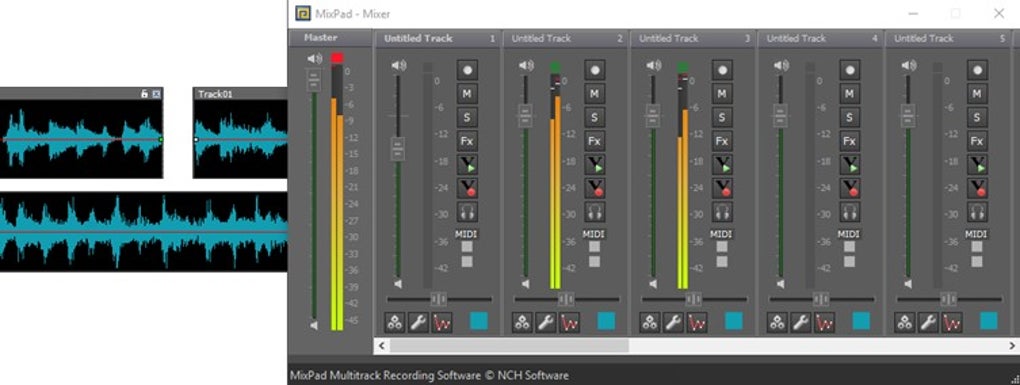
It is also important to position an absorbent surface behind the singer, to minimise the amount of sound reflected back into the 'live' side of the mic. You'll need to use either a cardioid or hypercardioid mic to make this work properly, and the monitor needs to be positioned in the 'dead' area of the mic, where it picks up little or no sound. This obviously raises the question of spill, but in situations where a modest degree of spill isn't a problem, you can get away with keeping the mic fairly close to the vocalist and setting up a speaker (or pair of speakers) behind the mic, in much the same way as you would live. Some singers just can't work with headphones, and in this case, the only alternative is to use loudspeakers for monitoring. The only way around this is to turn the control room monitors down as much as is practical while recording, and in extreme cases, the engineer may need to resort to headphones during recording. If you have the facility to provide a mono feed, omit the resistors and leave either the red or black core of the cable disconnected.Īside from the headphones, spill into the vocal mic can often be traced to sound leakage from the control room - the isolation between the control room and studio leaves much to be desired in many home studios and small commercial facilities.

This uses two 47Ω resistors to sum the left and right stereo channels to mono. If you don't want to tamper with your headphones, you can achieve the same result by making up a simple adaptor. Some singers find it easier to work with one headphone on and the other off, and if this increases the spill level unacceptably, you can always pan the headphone mix to one side, or even wire up a set of phones with one side disconnected. Whether a little spill from the cans is going to cause problems is really down to you to decide if the vocals are going to be used solo at any stage, then spill from the backing tracks needs to be kept to an absolute minimum, but in most instances, a little spill is not a major problem.

Although semi‑open headphones usually provide the most accurate sound, they don't give as good a degree of isolation as fully‑enclosed models. The type of headphones used by the singer can also make a difference to your end result. None of this need be radical, however, and a slight readjustment of the control room mix is usually all that's needed. This might mean bringing up the level of the pad keyboard part or the rhythm guitar, while pulling stabs and sound effects back a bit in the case of backing vocals, the singer also needs to be able to hear the existing vocal parts clearly. I can also constantly monitor their headphone balance, and even though the ideal monitor mix might not have quite the same balance as the final mix, that isn't usually a problem when you're overdubbing.Īs a rule, singers need to be able to hear both the rhythm of the track and an instrumental mix that will help them pitch their notes most accurately. Although most mixers come with elaborate foldback systems, I usually find it just as easy when recording a lone singer to feed them the control mix as it is to feed them a foldback mix - and at least I know then that they're hearing exactly the same thing as I'm hearing. I favour the type of system that allows the performer to control the overall level of his or her monitoring from within the studio or vocal booth. There are several factors which affect a vocalist's ability to pitch and perform properly, one of which is monitoring level. There's a tendency just to give the singer a pair of cans with a rough backing mix set up, and then leave her/him to get on with it - but this is unlikely to prompt the best possible performance.

It's all too easy to overlook the fact that the standard of a vocal performance can depend heavily on the type and quality of monitoring provided for the performer. If you can't get a good performance from your vocalist, it could be your method of monitoring that's at fault.


 0 kommentar(er)
0 kommentar(er)
